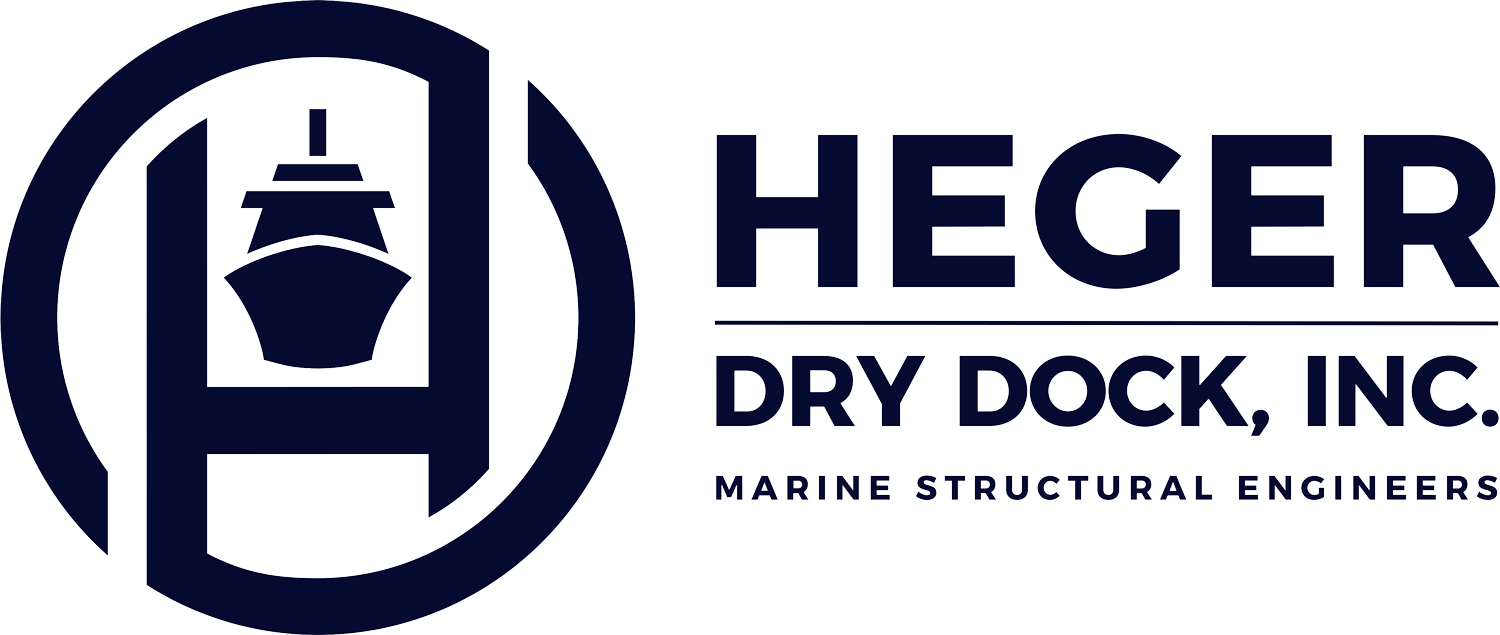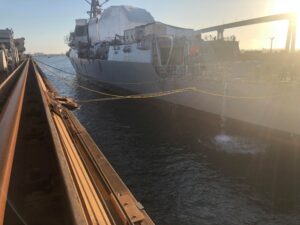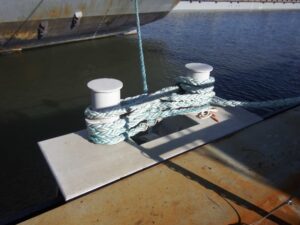A hauling and centering type trolley is one where the connection between the vessel and the trolley is maintained using mechanical force. Winches are utilized to haul the trolley along the rail while the trolley itself is mated to the vessel being maneuvered in or out of the dock. Typically wire rope is utilized for its strength, non-stretch, and rotational resistance characteristics as the connection between the trolley system and vessel.
The system can also be designed such that winches keep the mooring lines in constant tension, for additional control over the vessel, during hauling. Once the vessel is positioned longitudinally, the same winches can be utilized for final centering and positioning prior to landing the ship on blocks.
The most simplistic “hauling” type trolley system is provided in the photograph below. It utilizes a soft line connection between the trolley and vessel, similar to a standard trolley. Winches are connected to the trolleys such that they can be pulled along the length of the dock and therefore pulling the vessel along with it.
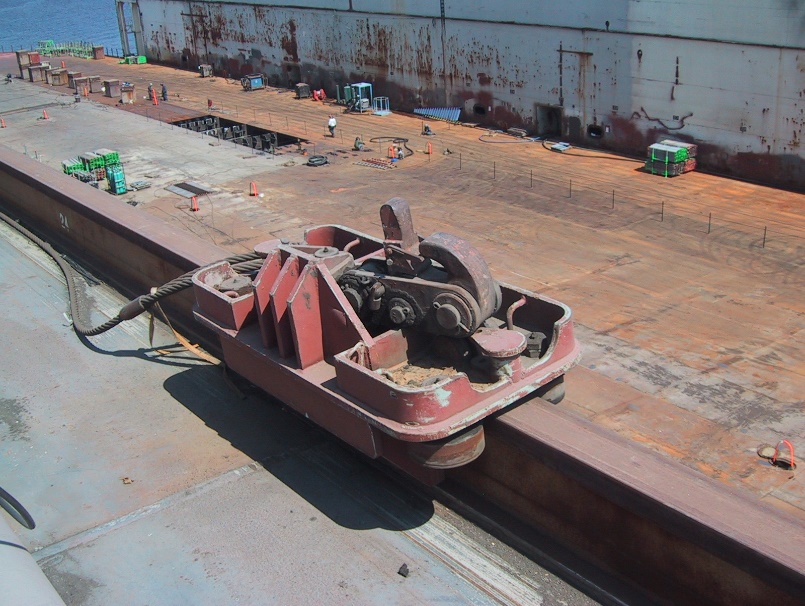
A slightly more advanced mechanical trolley system has the ability to both haul and center the vessel being maneuvered. The system requires two winches for each trolley; one winch to apply force to the line connected to the vessel and another to pull the troller along the rail. Ultimately, four trolleys are required to have a point of control at each corner of the vessel. This allows for the trolleys pull against each other and adjust vessel position while maintaining line tension.
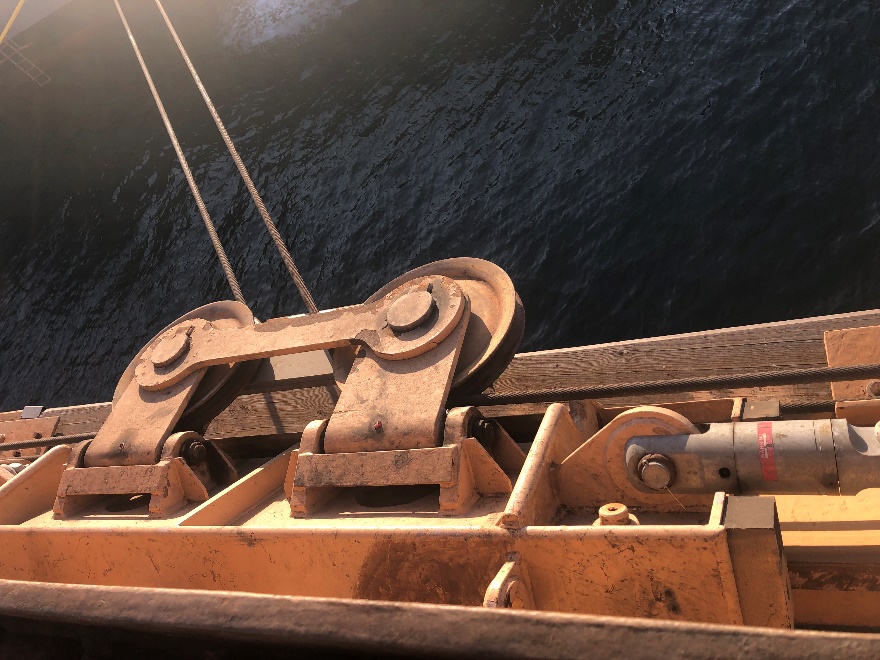
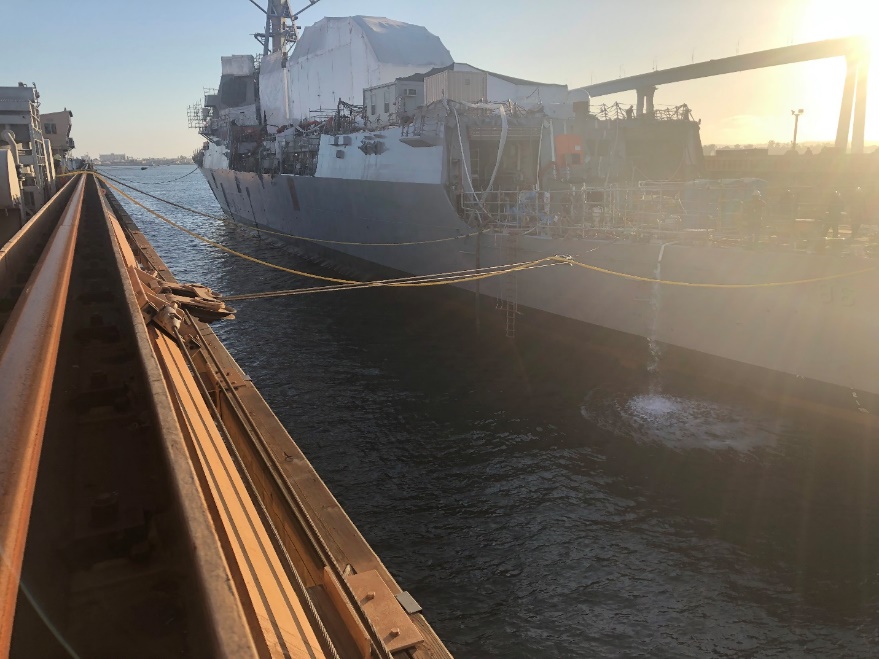
A typical procedure for docking using ahauling and centering system trolley style system is as follows:
- All trolleys on both the port and starboard sides of the dock shifted to the end of the dock where the vessel is to first cross the dock’s sill.
- Vessel assisted by tugs to sill of dock.
- As stern/bow of the vessel crosses the sill, all stop, and two trolleys (one per side) are mated up.
- Centering winches are used to create tension in the vessel-trolley lines, and tension is equalized.
- Hauling winches used to haul the trolleys, pulling the vessel along with them, while the tension of the lines and the vessel’s position is monitored and adjusted using the centering winches.
- Vessel continues to be hauled into the dock using hauling winches and the vessels position transversely continues to be maintained by the centering winches.
- As the stern/bow of the vessel crosses the sill, all stop, and the final set of trolleys are mated up to the vessel.
- Centering winches again are used to crease tension in these vessel-trolley lines, and tension is equalized.
- The vessel continues to be hauled into the dock using the hauling winches, all whilst the centering winches are used to maintain the tension in the vessel-trolley lines and keep the vessel positioned transversely in the dock.
- Once the vessel reaches the approximate final position, centering winches are used to adjust the vessel as close as possible to the final position. If more precise adjustment is needed additional positioning lines can be connected to the vessel.
A centering and hauling trolley system adds a significant amount of operating capability and safety to vessel maneuvering operation. These trolley systems can be custom designed for the required fit, function, and capacity of the facility.
